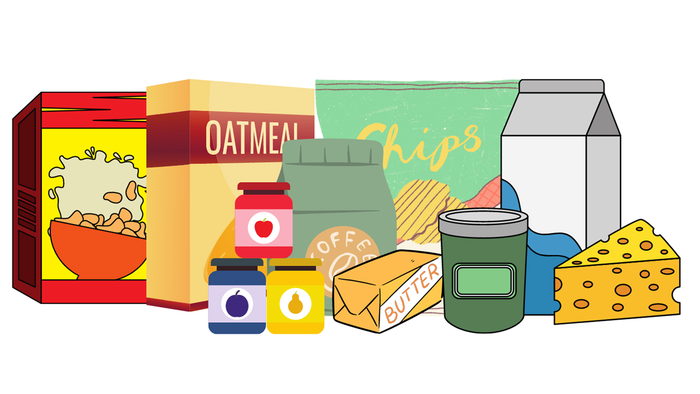May 26, 2020

Natural products retailers face countless threats that could cripple their business or ransack their reputation with virtually no warning.
Whether it’s a global pandemic, natural disaster, cyberattack, food-safety concern, in-store injury or onslaught of negative customer reviews, the ramifications can be swift and difficult to overcome. This is why it’s crucial for all retailers, regardless of size or scope, to plan out how they’ll handle and communicate about potential crises—from accidents they’re responsible for to incidents beyond their control.
“Oftentimes, it’s a retailer’s response that people will remember as much as any wrongdoing,” says Josh Gitelson, a public relations and corporate communications expert with RF Binder Partners in Boston. “Only through a thoughtful crisis communications plan can companies respond swiftly, strategically, sensitively and ultimately successfully.”
Here are nine elements to consider when making a crisis communications plan.
Corporate communications pro
 Josh Gitelson,
Josh Gitelson,
executive managing director at RF Binder Partners,
Boston, Massachusetts
Create a crisis response team. First, assemble the core team of decision-makers across the organization, determine everyone’s responsibilities and set the chain of communications internally and externally. Typically, the team includes the CEO or president, along with leaders overseeing operations, external and internal communications, IT, legal and human resources; specific scenarios will require other team members. One of the most important roles is spokesperson. Include media training in your planning to ensure they are prepared to face all questions, frame information correctly and communicate clearly and calmly under stressful conditions.
Evaluate risks and assess threats. Identify possible risks to the businesses, then compile the crisis scenarios that could impact the company. What already keeps you up at night? What has yet to be considered? Look at in-store issues, safety concerns, supply chain disruptions, crime, natural disasters and cyberattacks, just to name a few. Where are the greatest threats and vulnerabilities? What can or cannot be prevented? By identifying the scenarios that require the most attention, retailers can develop a specific tactical plan and determine which company leaders and outside partners to engage for specific situations.
List important contacts. Draft a list of contacts that, in addition to the crisis response team, includes key employees, suppliers, vendors, police, local media, elected officials, regulatory agencies, community leaders and any other stakeholders who should be notified of or could help resolve a particular issue. Review and update this list regularly to ensure it includes current names, titles, phone numbers (mobile, office and home), addresses, emails and social media handles.
Public relations consultant
 Ryan J. Walker,
Ryan J. Walker,
president of R.J. Walker & Co. Public Relations and Communications Consulting,
Bayonne, New Jersey
Determine appropriate audiences and channels. After doing a vulnerability assessment, identify the audiences affected by each scenario and how you’ll communicate with them. Depending on the nature and severity of the situation, some channels are better versus others. Social media, for example, might be the right way to address a crisis—or it may not be. If it’s an issue the community obviously needs to be aware of, make the announcement more public. But if it’s not, from a business perspective, you don’t want to alert people who otherwise wouldn’t have known, so don’t call the local newspapers or issue a press release. Instead, announce it in-store or in an honest blog post for your frequent customers to see.
Prepare statements in advance. In crises, people panic and want to get out there and say something, but I emphasize having the right response over a speedy response. Speed is important to make sure people aren’t left wondering where you stand, but issuing a statement too hastily can actually hurt you more. Take United Airlines, for example. A few years ago, there was video of flight attendants dragging a customer off of the plane, and the first thing the CEO said was “I stand by my employees.” That didn’t go over well. To avoid this, have well-thought-out responses ready to go for each potential situation. Draft statements that are about 80% complete, and you can fill in the specifics later.
Schedule regular reviews. Retailers should re-examine and walk through their crisis communication plans with regular frequency. Get the crisis response team together, do the vulnerability assessment, look at what threat levels are, determine your audiences and revisit this exercise every six months or so to ask whether the issues are changing. Are there new things you need to be aware of that you weren’t before?
Retailer
 John Dyke,
John Dyke,
owner of Turnip Truck Natural Market,
Nashville, Tennessee
Build a relationship with a PR expert. It’s important to have the right people in place who know your story and can deal with external media, especially during crisis scenarios. Along with our internal marketing director, who manages our social media accounts, I have a long-term working relationship with an external public relations consultant. She has a lot of media connections, and she and I check in with each other throughout the year.
Check in with staff. Last year we made a partial plan for what to do if a tornado happened. But for the aftermath of a tornado—like the one that hit East Nashville in March—we did not have a plan. And I don’t think I could’ve written a plan for experiencing a tornado and a global pandemic at same time. But in dealing with both, I realized the importance of continually checking in with every employee during and after a crisis. They all want to be on the front lines helping out, but they have emotions too and need to take care of themselves so they can take care of our customers. I’ve been visiting each store daily and asking every employee, “How are you today?” I can tell really quickly if someone needs a day off or to talk.
Ramp up communication with customers. During the onset of the pandemic, one thing we did on Facebook and Instagram was provide daily updates of products we were out of, when we anticipated filling those needs and what we had in stock that we heard other stores were out of. We’d often include photos, and sometimes we’d give a more general update, such as a certain department was 90% in stock. This way, instead of customers driving to our store, getting out of their car, coming in and finding out something they needed wasn’t in stock, they knew what to expect from us.
About the Author
You May Also Like
.png?width=700&auto=webp&quality=80&disable=upscale)




